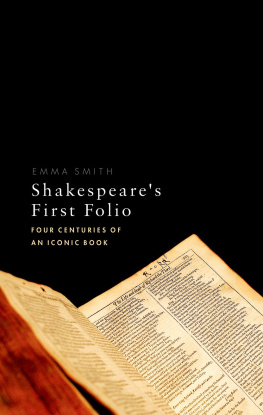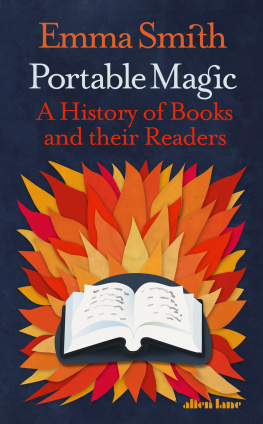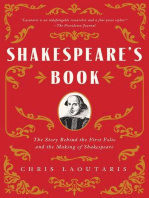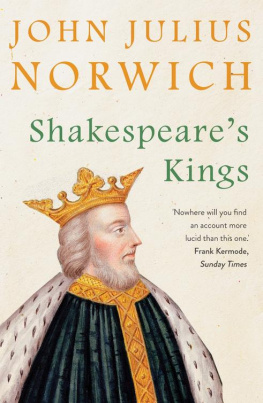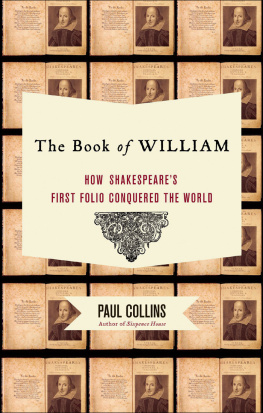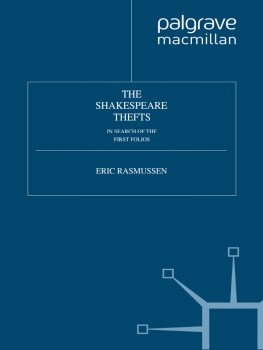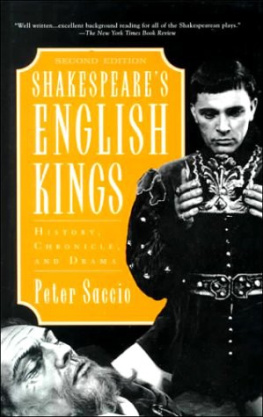
I have been working on this book for a long time and gathered many debts. The Sprint for Shakespeare campaign at the Bodleian Libraries in 2012 was a real boost to my thinking about one particular First Folios past and present. It was a project involving fundraising, conservation, imaging, and digital services, and thanks are due to Nicole Gilroy, Christine Madsen, Margaret Czepiel, Sarah Thomas, and especially to Pip Willcox, as well as all the other people, including the many donors, who made it possible to put the book online. Colleagues in the Bodleian, particularly Sarah Wheale and the staff of the reserve in the Upper Reading Room, have been unfailingly helpful during a time of enormous and stressful change at the library. Other library colleagues elsewhere who particularly have helped me with access to this awkwardly valuable book and to related material in different contexts include Jocelyn English, Alice Ford-Smith, Susan Killoran, Tim Kirtley, Calista Lucy, Janet McMullan, Bryan Maggs, Martin Maw, Jun Ota, John Pollack, Georgia Prince, Alice Roques, Amanda Saville, Niall Sheekey, Sue Usher, Betsy Walsh, Martin Wills, and Georgianna Ziegler. Clare Asquith, Helen Barr, Judy Beckett, Giles Bergel, Claire L. Bourn, Karen Collis, Derek Dunne, Sascha Frster, Arthur Green, Tracey Hill, Kevin Hilliard, Peter Holland, Andrew Honey, Adam Hooks, Ian Jackson, Andy Kesson, Zachary Lesser, Sjoerd Levelt, Robert Lloyd George, Samuel Horsley, Katherine Lunn-Rockliffe, Elizabeth Macfarlane, Laurie Maguire, Peter Marx, Jean-Christophe Mayer, Barry Murnane, Catherine Richardson, Shef Rogers, Viv Smith, Lyn Tribble, Kate and Rupert Wallace, Sarah Werner, Anthony James West, Abigail Williams, Henry Woudhuysen, and Akihiro Yamada have all asked, or answered, questions, helped me find materials, and read parts of the book. Without Noriko Sumimotos patience, kindness, and expertise I could not have made a trip to Meisei; without Tom Bishop, the generosity of the Alice Griffin trustees, and colleagues at Auckland, I would not have got to New Zealand; without Missing Bean I would not have got to work at all. I am grateful to university and general audiences at Sussex, Birkbeck, Cambridge, Auckland, the Wells Literary Festival, Londons Guildhall, the West Sussex Oxford Society, and the Friends of the Bodleian Library for the chance to try out parts of this material. I have disagreed on many points of detail and occasionally of substance with Eric Rasmussen and Anthony James Wests The Shakespeare Folios: A Descriptive Catalogue (2012), but I could not have developed this project without their invaluable work.
I have consulted a large number of Folio copies and have tried particularly to shift the Folger-centrism of previous studies of this fascinating book. I am grateful to the staff and trustees of the Shakespeare Birthplace Trust, the New York Public Library, the Morgan Library New York, the Furness Library at the University of Pennsylvania, Senate House Library University of London, the British Library, the Victoria and Albert Museum, Trinity College Cambridge, the University Library Cambridge, Kings College Cambridge, Queens College Oxford, Wadham College Oxford, Birmingham City Library, Auckland City Libraries, Meisei University Tokyo, Eton College, Winchester College, Glasgow University Library, National Library of Scotland, Dulwich College, Sir John Soane Museum, Folger Shakespeare Library, Universitt zu Kln, University of New South Wales, London Guildhall Library, The Craven Museum Skipton, Universitt Stuttgart, John Rylands Library Manchester, Brotherton Library Leeds, The Getty Library at Wormsley, the Quaritch archive, Oxford University Press archives, and La Bibliothque de lAglommeration at St-Omer.
The Principal and Fellows of Hertford College, Oxford, our English students over many years, and my closest colleagues Charlotte Brewer and David Dwan, have all made my work more collegial and enjoyable: I am lucky to be there.
This book is for Elizabeth Macfarlane, with thanks for the Norton, and for everything else too.

In quoting from the First Folio I have used the copy I discuss at length in When citing Shakespeare lines or scenes, I have provided the act, scene, and where appropriate, line reference from the Oxford Shakespeare, ed. Stanley Wells and Gary Taylor (1986). For ease of reference I have used Anthony James Wests numbering system for individual Folio copiesWest 1, West 2 etcas developed in his The Shakespeare First Folio: The History of the Book: Volume 2. A New Worldwide Census of Folios (2001) and expanded in Eric Rasmussen and Anthony James West, The Shakespeare First Folios: A Descriptive Catalogue (2012). Unless otherwise stated my account of these copies is based on my own work with them.

(information about copyright ownership is in brackets)
| I.1 |
| I.2 |
| 1.1 |
| 1.2 |
| 1.3 |
| 1.4 |
| 1.5 |
| 1.6 |
| 1.7 |
| 2.1 |
| 2.2 |
| 2.3 |
| 2.4 |
| 2.5 |
| 2.6 |
| 3.1 |
| 4.1 |
| 4.2 |
| 4.3 |

